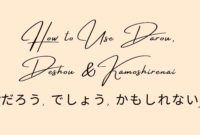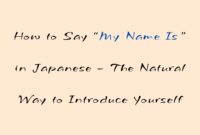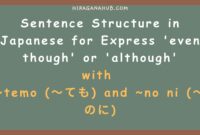Japanese Sentence: Is the subject A or B? (Subjek は Noun1 ですか, Noun2 ですか)

Learning Japanese grammar is not just about memorizing vocabulary; it’s also about understanding commonly used sentence patterns. Today, we’ll explore the pattern “Subjek は Noun1 ですか, Noun2 ですか”, which is very useful when asking about two options. Let’s dive in!
Part 1: Vocabulary List
Before we dive into the sentence pattern, here is a list of vocabulary we’ll use:
| Kanji | Hiragana | Romaji | Meaning |
|---|---|---|---|
| 車 | くるま | kuruma | car |
| バス | バス | basu | bus |
| チョコレート | チョコレート | chokoreeto | chocolate |
| 飴 | あめ | ame | candy |
| 辞書 | じしょ | jisho | dictionary |
| 雑誌 | ざっし | zasshi | magazine |
| ボールペン | ボールペン | borupen | ballpoint pen |
| シャープペンシル | シャープペンシル | shapupenshiru | mechanical pencil |
| 鍵 | かぎ | kagi | key |
| ロック | ロック | rokku | combination lock |
| コーヒー | コーヒー | koohii | coffee |
| ジュース | ジュース | juusu | juice |
| 何 | なん/なに | nan/nani | what |
Part 2: Sentence Pattern Description
Basic Structure:
「Subjek は Noun1 ですか, Noun2 ですか」
- Subject : The subject of the sentence (the person or thing being discussed).
- Wa (は): A particle indicating the topic of the sentence.
- Noun1 & Noun2: The two nouns being presented as options.
- Desuka (ですか): A polite question marker.
Meaning:
“Is the subject Noun1 or Noun2?”
This simple structure is highly versatile and frequently used in everyday conversations.
Part 3: Example Sentences
Meaning: Is this a car or a bus?
B: それは車です。- Sore wa kuruma desu.
Meaning: That is a car.
Meaning: Is this candy or chocolate?
B: それはチョコレートです。– Sore wa chokoreeto desu.
Meaning: That is chocolate.
Meaning: Is that a magazine or a dictionary?
B: あれは雑誌です。- Are wa zasshi desu.
Meaning: That is a magazine.
Meaning: Is this a key or a combination lock?
B: それは鍵です。- Sore wa kagi desu.
Meaning: That is a key.
Meaning: Is that a ballpoint pen or a mechanical pencil?
B: それはシャープペンシルです。- Sore wa shapupenshiru desu.
Meaning: That is a mechanical pencil.
Meaning: Are you American or Brazilian?
B: 私はブラジル人です。- Watashi wa Burajiru-jin desu.
Meaning: I am Brazilian.
A: この飲み物はコーヒーですか、ジュースですか?- Kono nomimono wa koohii desuka, juusu desuka?
Meaning: Is this drink coffee or juice?
B: それはジュースです。- Sore wa juusu desu.
Meaning: That is juice.
Part 4: Practice Exercises
Exercise 1
Use the following words:
- Subject: “This” (kore)
- Options: “bus” (basu) and “car” (kuruma)
Exercise 2
Use the following words:
- Subject: “This drink” (kono nomimono)
- Options: “coffee” (koohii) and “juice” (juusu)


